
Botticelli created the painting “Madonna with a pomegranate” in the 15th century in the Renaissance style, which was placed in the auditorium of the Palazzo Vecchio.
The picture is drawn in the designated circle, in which the angels are located, they surround the Madonna, holding the baby in her arms, the folds of the cloak are placed on the lap of the Madonna near the baby. This creator was depicted silhouettes of figures, details of smooth lines, which swiftly rise up, then fall or twist.
Thanks to this product fills the internal movement and hidden alarm. Against the backdrop of the animated angels, the modest Maria seems very sad, which is noticeable in her eyes, and this note is intercepted by a grenade drawing in the hand not by the years of a serious child – which is a symbol of the Passion of the Lord.
Drawing his canvas, the master seemed to want to give more glory to a woman than the heroine of his painting has. The center of the picture is attractive to the viewer, it shows the soft gesture of a woman’s hand, which immediately attracts her attention.
Every detail on this canvas the artist tried to depict as realistically as possible, which is very noticeable.
The large forehead of the protagonist of the work is framed by hair that descends on the shoulders in the form of golden curls. There are some disproportions in the child’s body, which can be explained by the fact that there was no baby from whom the painter sketched the baby, or he wanted to give them variability to emphasize the unearthly origin of the baby as much as possible.
Painter in the presence of a special composition, thanks to which on the finished picture he left the feeling in the audience that there is “incompleteness”. So he probably wanted to leave a place where life itself could play a major role and make its own changes to this work.
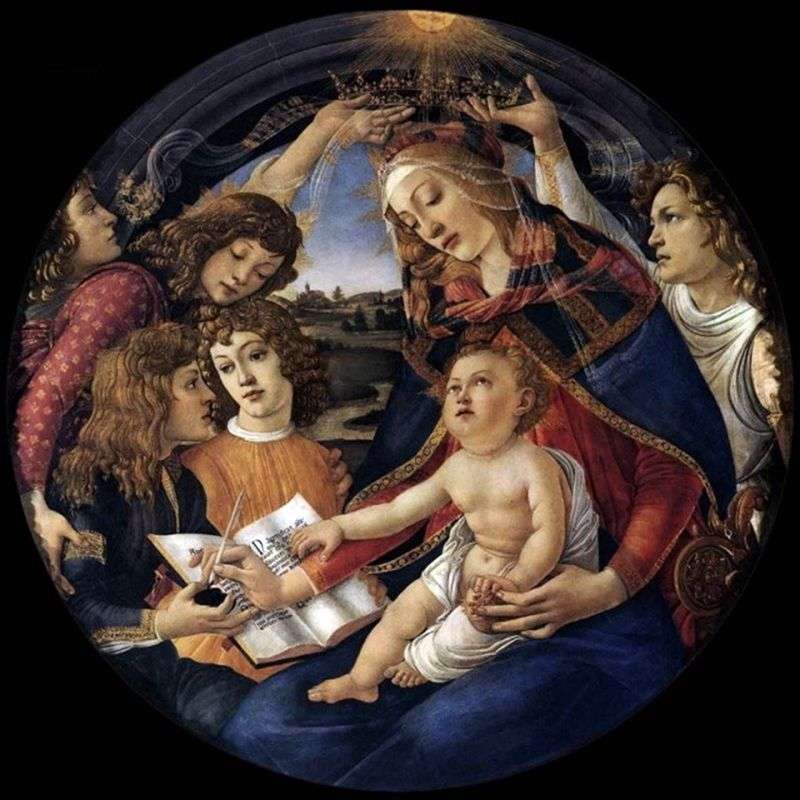 Madonna Magnificat by Sandro Botticelli
Madonna Magnificat by Sandro Botticelli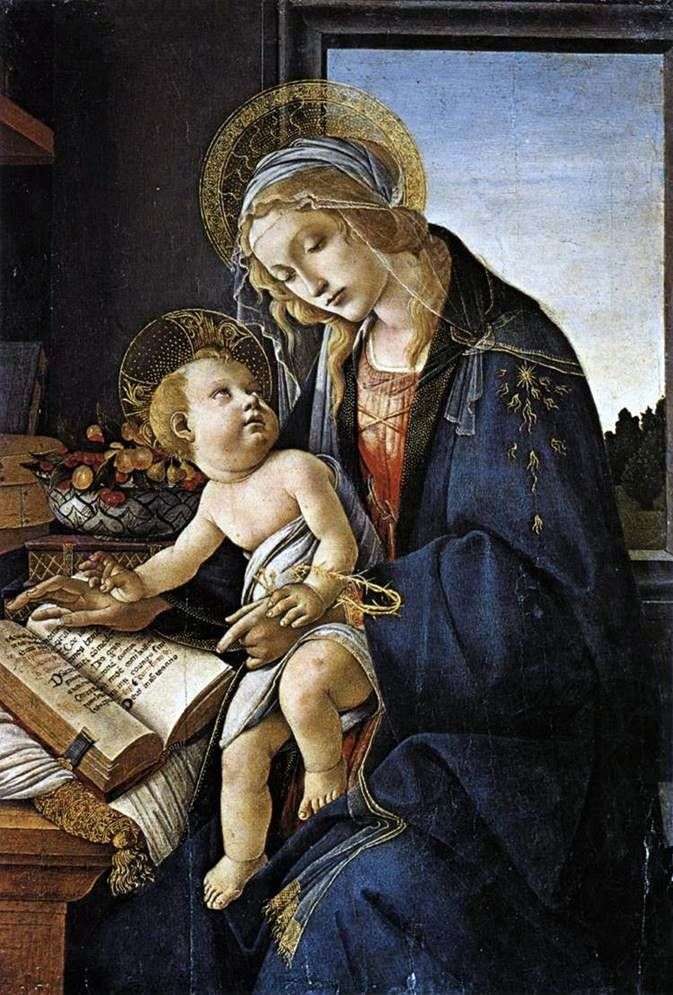 Madonna with a book by Sandro Botticelli
Madonna with a book by Sandro Botticelli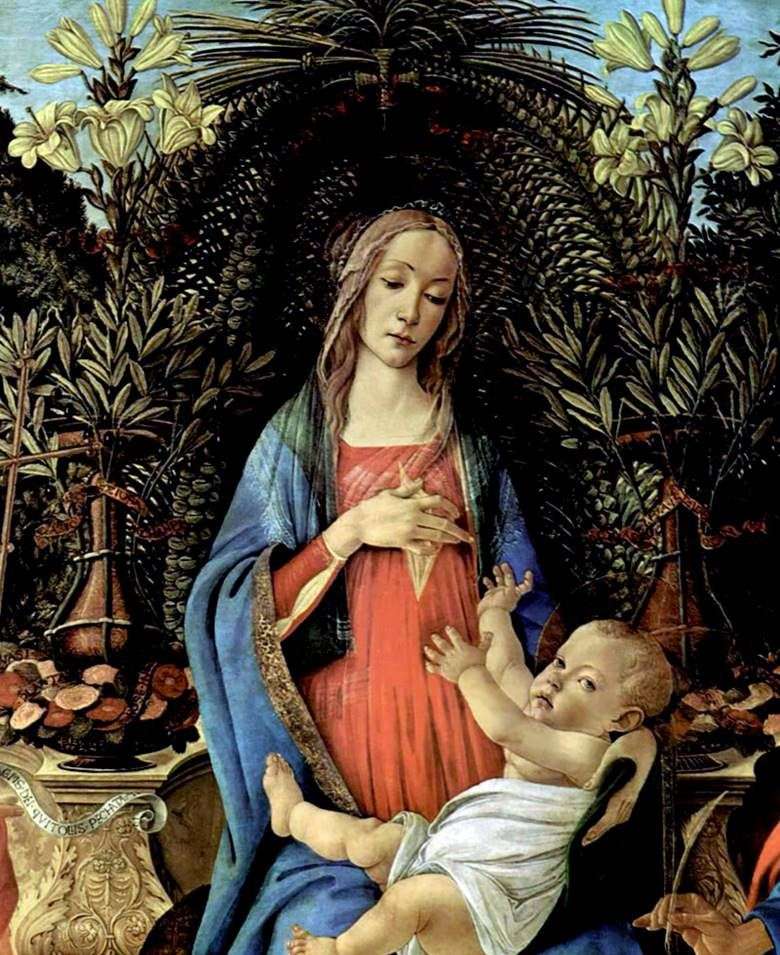 Madonna Bardie by Sandro Botticelli
Madonna Bardie by Sandro Botticelli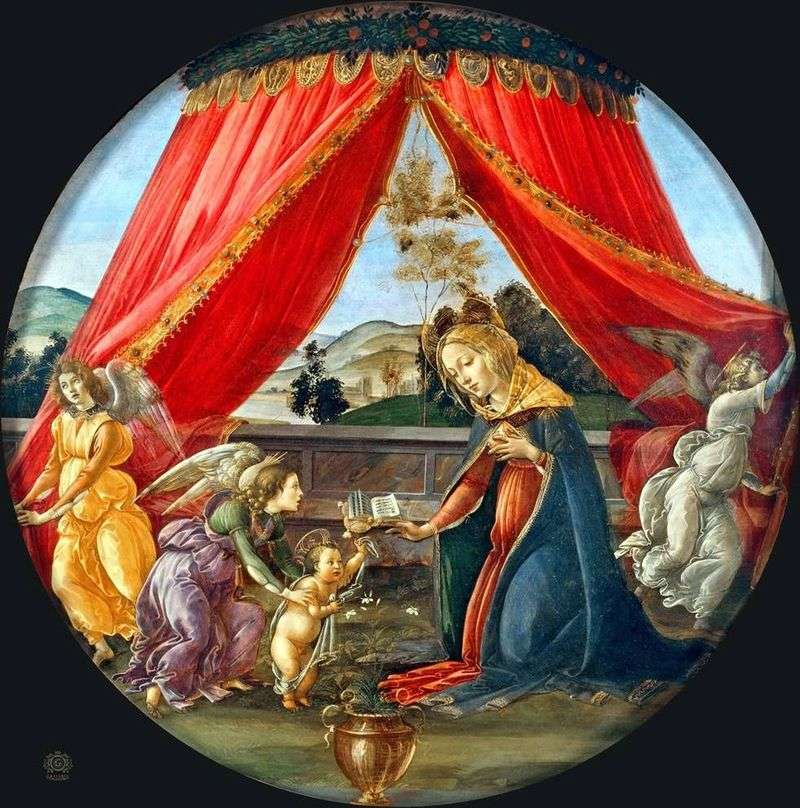 Madonna under the canopy (Madonna del Padillone) by Sandro Botticelli
Madonna under the canopy (Madonna del Padillone) by Sandro Botticelli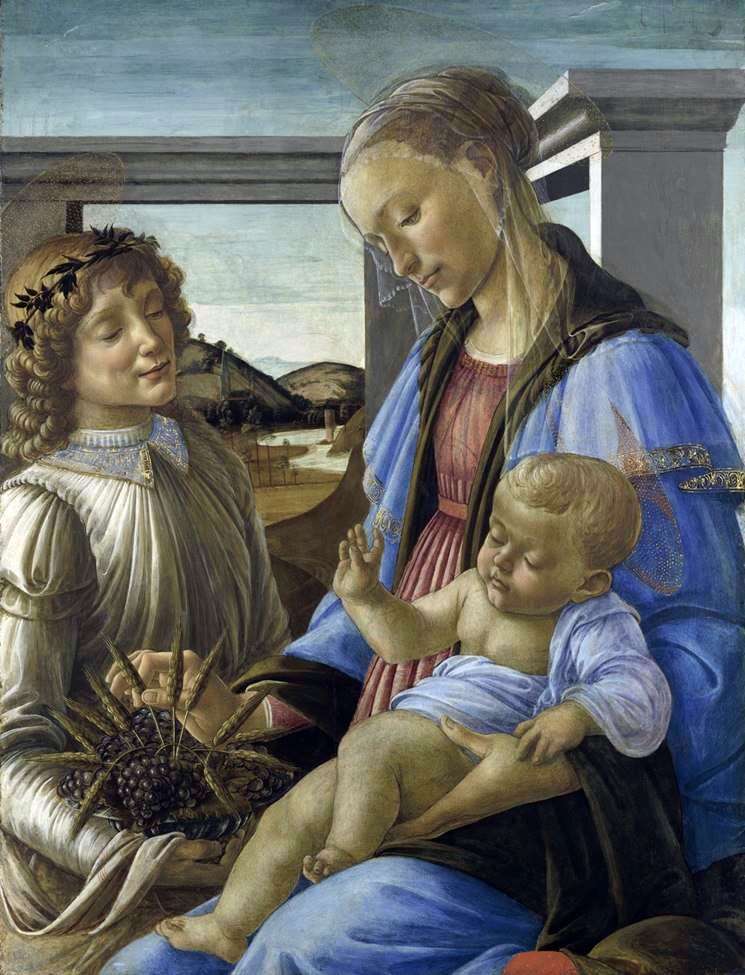 Madonna with Child and Angel (Madonna of the Eucharist) by Sandro Botticelli
Madonna with Child and Angel (Madonna of the Eucharist) by Sandro Botticelli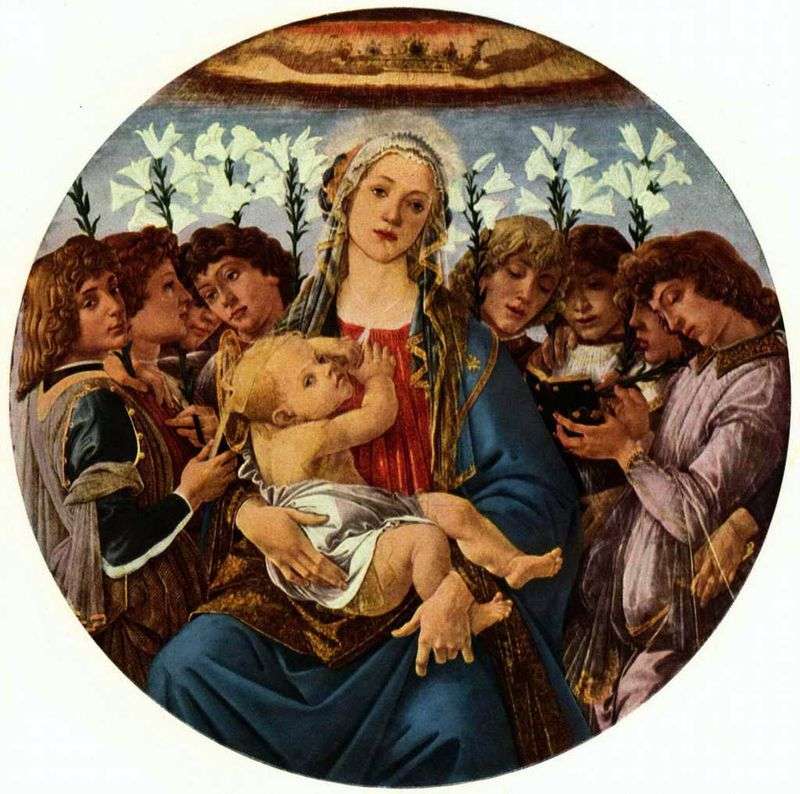 Madonna with the Child and the Eight Angels (Rachin Tondo) by Sandro Botticelli
Madonna with the Child and the Eight Angels (Rachin Tondo) by Sandro Botticelli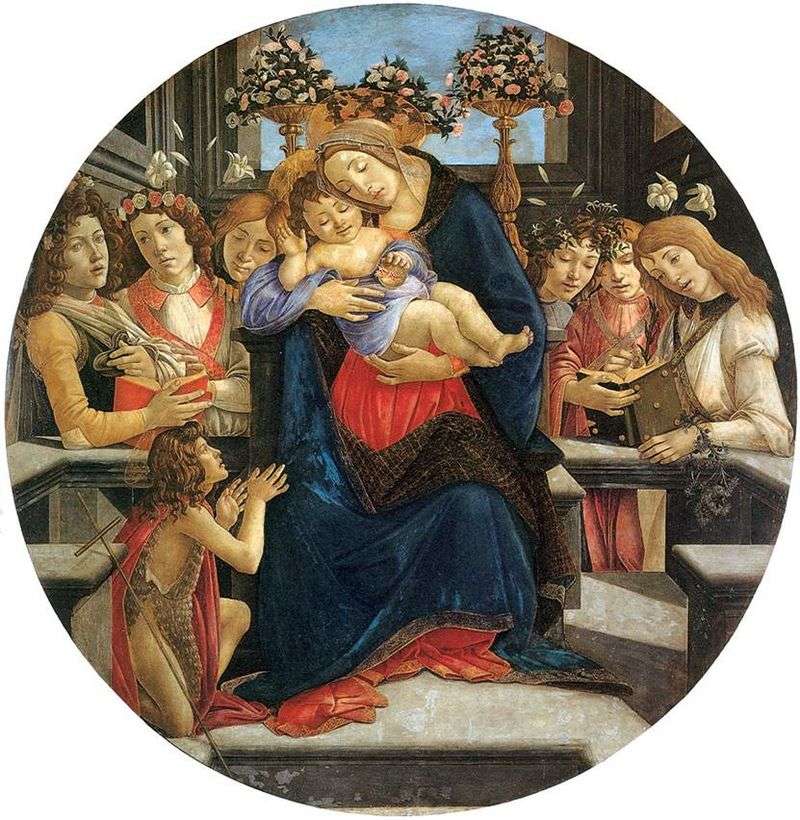 Madonna with Child, Angels and Saint John the Baptist by Sandro Botticelli
Madonna with Child, Angels and Saint John the Baptist by Sandro Botticelli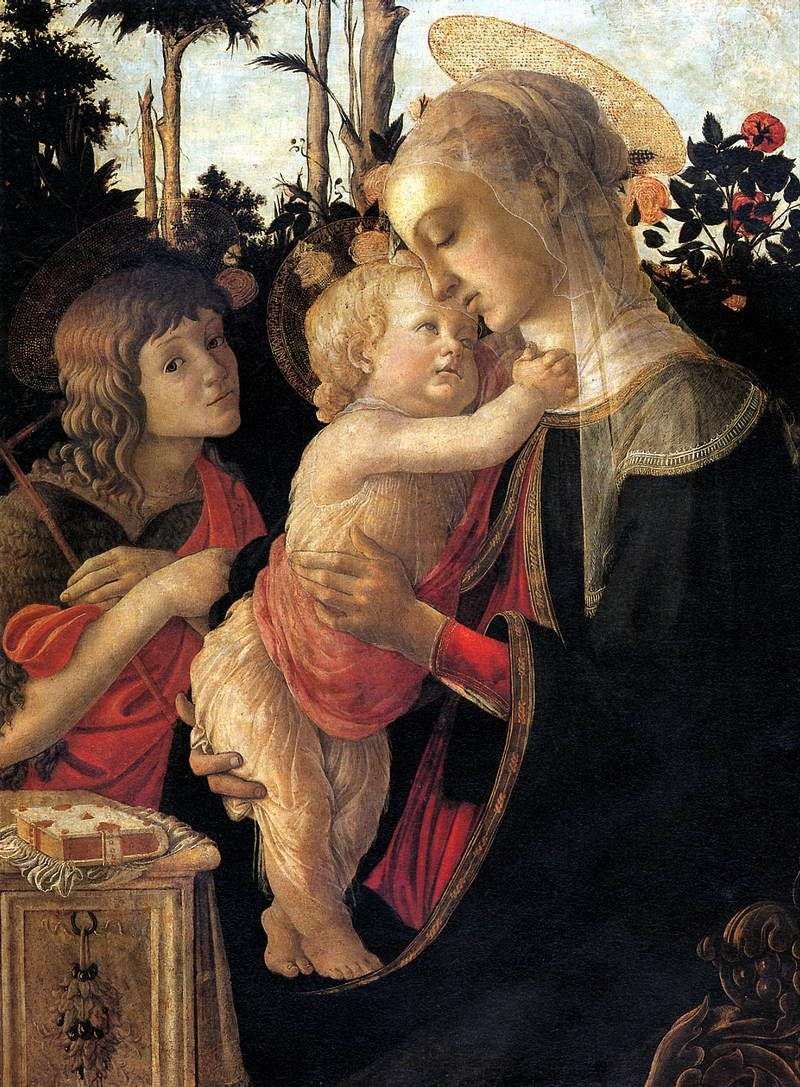 Madonna with the Child and John the Baptist by Sandro Botticelli
Madonna with the Child and John the Baptist by Sandro Botticelli